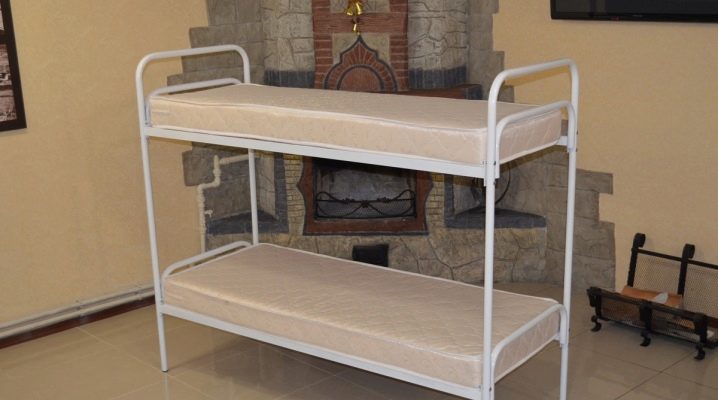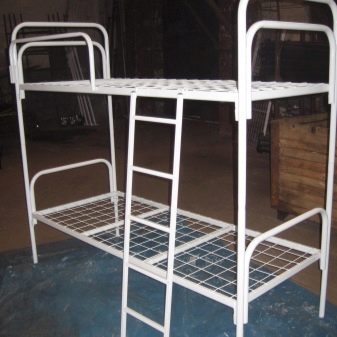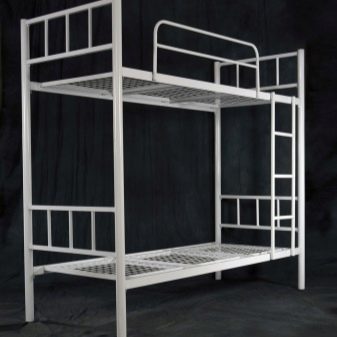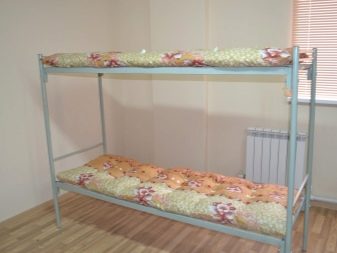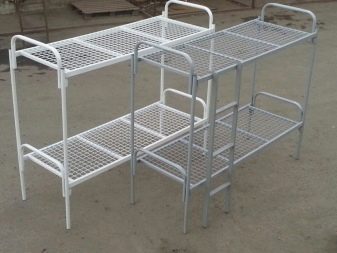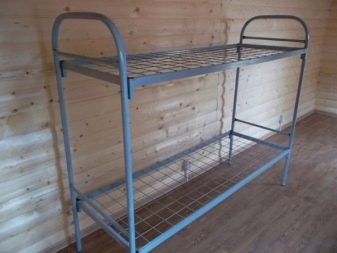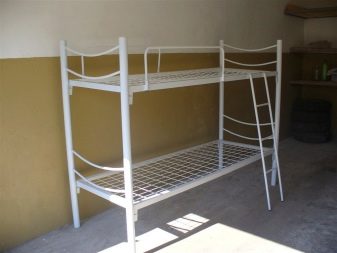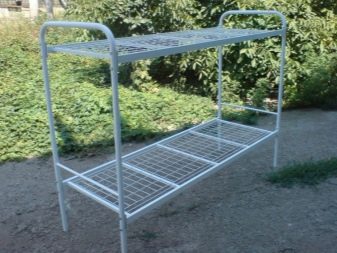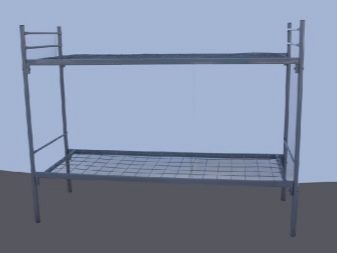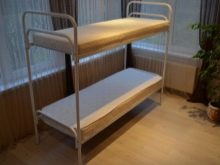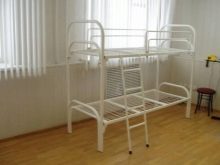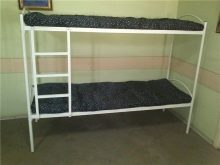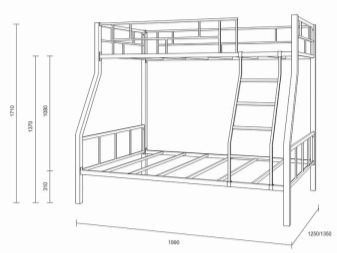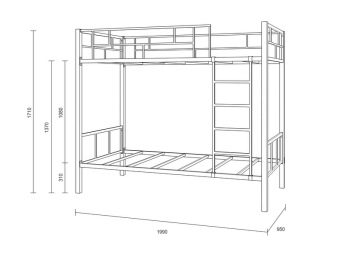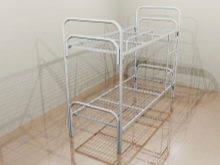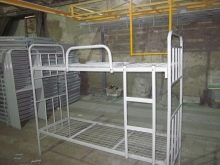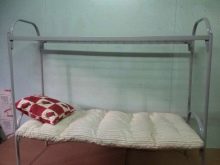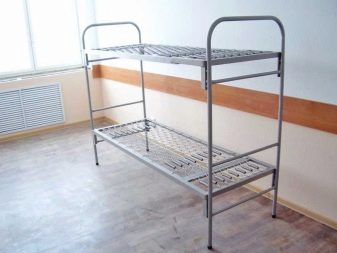Choosing iron bunk beds for builders and workers
No construction, no enterprise can do without builders and workers, respectively. And until the robots and automata drive people out of everywhere, it is necessary to provide working conditions. Including for sleeping, that is, good beds.
Special features
Construction and rotational sites must be equipped with leisure furniture. Among her will necessarily be iron bunk beds for workers or for builders. Neither wood, nor plastic, nor other natural and synthetic materials provide the necessary durability. Most often, the layer below is primed to eliminate cracking and spalling. Bunk beds made of metal allow the most efficient use of the organization.
Benefits
The bunk bed from steel saves the place in comparison with the double quantity of single-tier designs. This moment is especially relevant in rooms with a small area. An exceptionally robust frame helps prevent breakage even with a substantial load. The advantage of the metal structure is excellent fire resistance, zero fire danger.
High humidity or drying also does not harm the material, it will not rot and will not become a hotbed of the development of pathological fungi.
Species
Metal beds in two tiers in height can be quite different; part of the delivery includes even bedding. But the main difference, of course, is quite different, and is associated with the design. The simplest option is used in militarized organizations and in hostels. Sleeping places are mainly made of armored metal net. Slightly less used slats.
For a bed to last longer, it must:
- have supports and backs of great thickness;
- covered with a powder protective layer;
- be easy;
- provide easy assembly and transportation;
- Comply with the provisions of GOST and sanitary regulations.
The connection of parts of the structure is made with wedges or bolts. The second tier, and ideally both, should have a safety fence. For your information: the supply of bed accessories in the set allows you to save money. Depending on the design of the designers, the beds are made of stainless materials ... or of ordinary, but covered with anti-corrosion mixtures.
This allows you to multiply the service life.
Tips for choosing
It is recommended in any case to require proprietary certificates issued by the manufacturer.
It should be checked:
- how strong are the mounts;
- whether the bed is stable in the folded and unfolded position;
- whether the mesh or lamella.
Quality iron bed must comply with GOST 2056-77. Aluminum structures are almost as strong as steel, and low susceptibility to corrosion and relative lightness will delight all who use the bed. Disposable products are much better than disassembled - because all openable connections increase the risk of defects. You should not buy very cheap products, because their strength rarely meets the necessary requirements.
If, however, preference is given to the collapsible version, it is necessary to focus on the ease and convenience of using the mechanism.
Available sizes
There are various dimensions of iron bunk beds, the main ones among them are:
- 80x190 with chipboard;
- 70x190 with chipboard;
- 80x190 with chipboard;
- 70x190 with chipboard.
When selecting the need to take into account, what is the growth of people who have to use the bed. Usually acquire the largest model that can fit in a bedroom and not interfere with the movement of people. Even if manufacturers or sellers say that the size is “standard”, it is still worth further clarifying the dimensions. It is advisable even to check manually using a tape measure, and not blindly trust the accompanying documents. Since this is not about families, but about construction or production personnel, all beds should be of a single size.
The width varies from 70 to 100 cm. The bulk of the beds is 1.9 m long. Constructions 2 and 2.18 m long are less common. Even longer beds can only be ordered individually. The length is selected by adding 100-150 mm to the growth of using the bed.
As for height, it should allow the easiest and most convenient use.
Additional recommendations
It must be borne in mind that beds for workers and builders are somewhat different. So, in the production dormitories put the same design as in low-cost hostels. Modifications that have a steel frame, complemented by spring mattresses. Sleeping in such a bed is comfortable even for many hours. But on the construction sites such products do not meet.
There are preferred disassembled modifications. They are easy to place inside the trailers. Geometry is the simplest, because there is no need for any frills. Many versions are made sliding, such a bed is easy to adjust for growth. If the work is organized on a rotational basis and the staff is systematically changing, this solution will work individually.
In the production for obtaining beds use steel tubular profile, the wall of which has a thickness of 0.15 cm.
Instead, a straightened profile of the same thickness is sometimes used. Usually use a square profile, the cross sections of which are 4x2, 4x4 cm. The diameter of the pipes should be 5.1 cm. The backs and legs are often formed from the same metal elements.
Sometimes use a combination of profile with the continuous backrest of laminatedparticle board.
If you want to ensure maximum reliability, choose steel bunk beds, in which:
- a construction pipe with a cross section of 51 mm was used;
- there are two reinforcing elements;
- the grid is formed from cells of the smallest size;
- special wedges are used to secure the net.
For the administration of production for any purpose, it is very important how many rooms will be occupied by staff, since renting housing that is sometimes necessary to accommodate workers and builders costs companies huge amounts. In order to save money, of course, more profitable bunk bed options with great reliability.
The overview on the iron bunk bed for builders and workers you will see in the next video.
